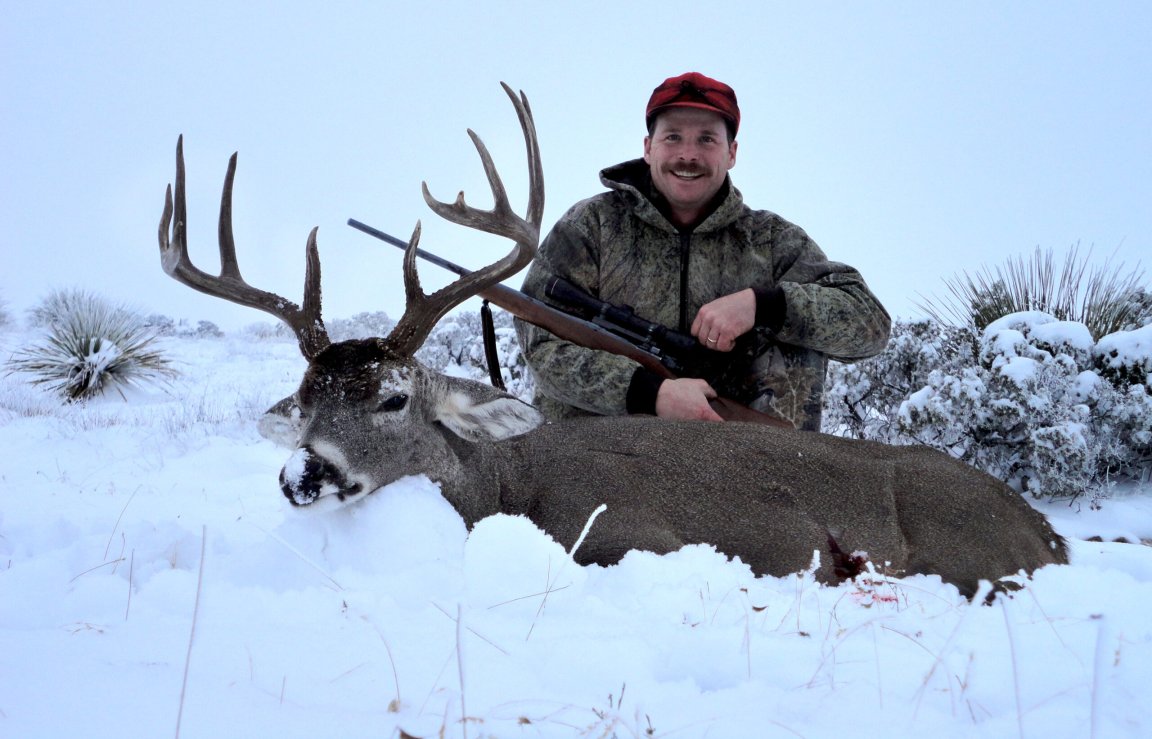I’m constantly amazed at how difficult it is for some folks to find game, whether they are hunting elk in the Rockies, mule deer in the desert Southwest, or whitetails in big woods. They hunt and hunt for just a glimpse of their quarry. On the flip side there are hunters who seem able to wander into the woods and effortlessly bring home the bacon. What makes the difference?
Here are three strategies that many hunters disregard when they head afield. As a result they hunt and hunt, finding animals only when the occasional lucky break places the critters in their path.
Last fall a good friend of mine drew a late-season cow elk tag here in Utah. My wife drew the tag as well. These cow elk permits are prized among those of us who eat all year from a freezer full of elk and deer meat. My friend is such a fellow; hunting has grass-roots purpose for him. He needs meat for his family to eat.
Often my friend and I hunt together, and have doubled-up on game in the past. This year I was unable to get away to go with him due to a busy schedule, so my buddy hunted by himself. He hunted, and hunted, and hunted some more. Spending all day—day after day—in the field had him exhausted.
One evening, with only a few days left in the season, my wife and I found a spare hour and headed onto the mountain to hunt. We crossed paths with my friend—he was headed home, too tired from a long day of hiking to hunt any more. I raised an eyebrow; he would miss the best part of the day for hunting. Less than an hour later my wife made a great shot on a trotting elk, rolling the cow down the mountainside. We jubilantly processed our meat by the light of our headlamps.
My buddy was making some mistakes: He was not carrying good optics, he was not focusing his efforts in key locations, and he was burning energy by hunting all day long, rendering his prime-time hunting less effective. Here’s how he could have changed his luck.
1. Hunt where the animals are
No matter how hard you work, you won’t find game that isn’t there. Focus on areas that meet all your quarry’s current needs: food, water, cover, and security. If the weather is hot, hunt cool shady areas with easy access to water. If it’s cold, search out areas with ample high-protein food sources. If there is heavy hunting pressure, find areas that are so hard to hunt no one goes there—except the game you’re after.
2. Hunt smart
I’m entirely in favor of hunting all day long. But if you have a limited amount of time or energy, focus on prime hunting hours. Usually that means early morning and late evening. But think outside the box—one of my strategies during late-season elk hunts is to wait, biding my time until a fresh snowfall. Then I throw everything else to the wind and hunt till I kill an elk. Usually that means saddling my horses and hitting the mountain at dawn. I’ll ride cross-country until I cut fresh elk tracks in the snow. Riding their trail, I watch for sign that the elk are getting sleepy—excessive wandering, urine and dung, and the occasional short-term bed. At that point I dismount and stalk forward cautiously until I spot the elk. Usually I can make meat in one day using this strategy.
3. Use good optics
A savvy hunter can find a lot of game by locating a good vantage point and parking your binocular against your eyebrows for a while. Miles upon miles of territory can be scrutinized through your lenses—it’s impossible to cover the same country by hunting through it. Cover more country and you will find more game.
All optics are not created equal. As a kid I got a cheap pair of field glasses for Christmas. They worked, sort of. When I was seventeen I started saving for good binoculars. Took me a year and a half to save enough, but eventually I walked into the high country with a Swarovski slung around my neck. What a difference! That binocular was worth every sweaty hour of hard work. Cheap optics will produce eye-strain, headaches, and distorted vision. Good optics will produce game. There is lots of good glass out there, but in my opinion Zeiss, Swarovski, and Leica are at the top of the totem pole. They will cost more than your hunting rifle—maybe lots more. But they will last a lifetime and are surely worth the money.
